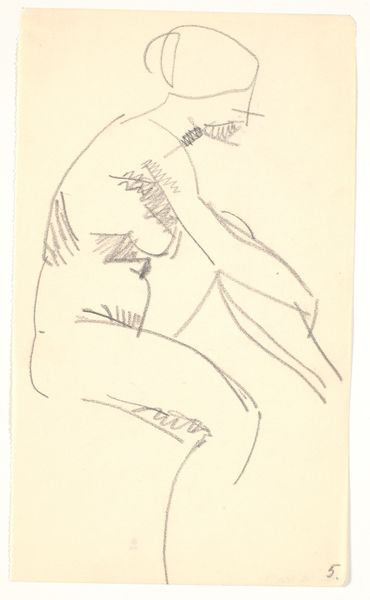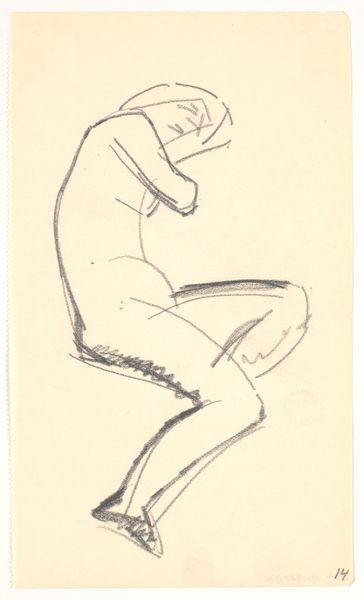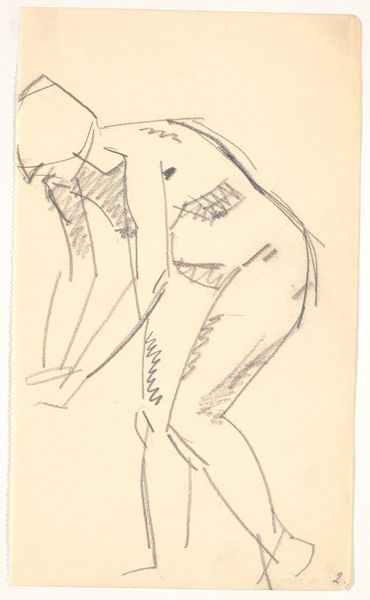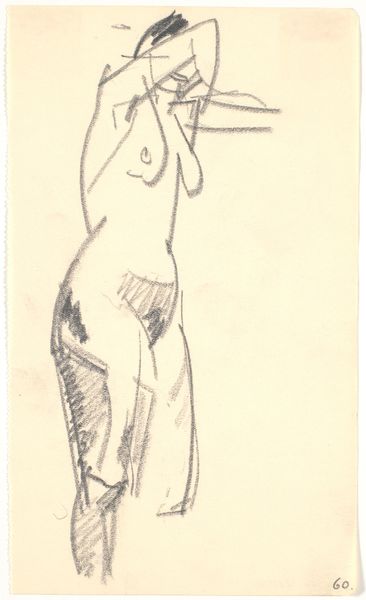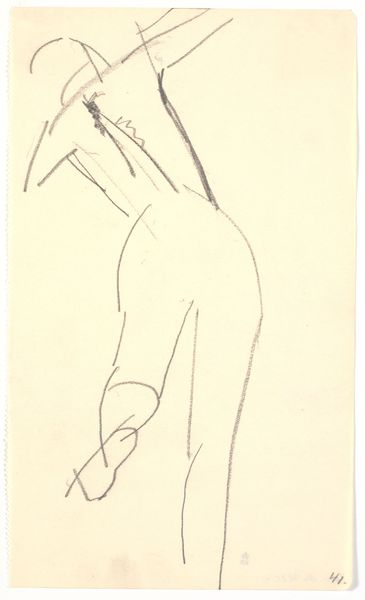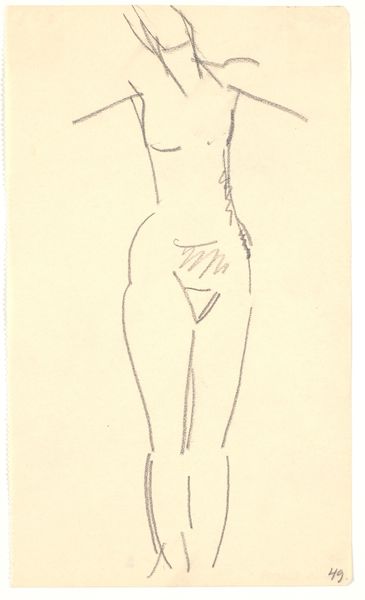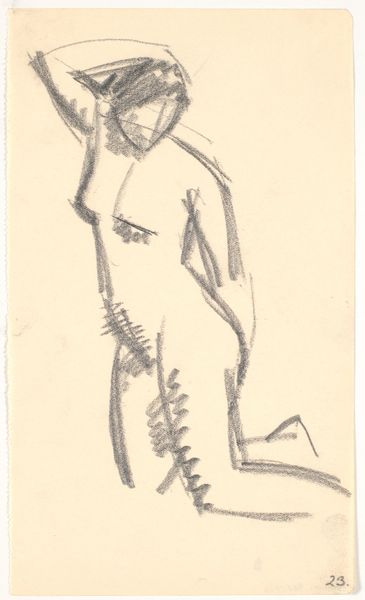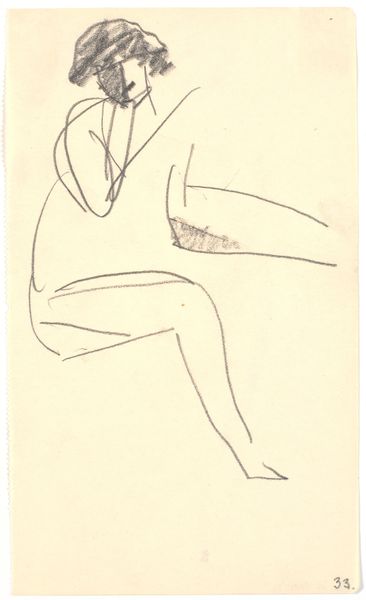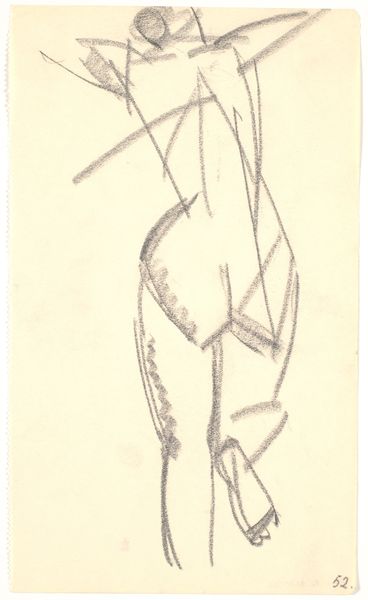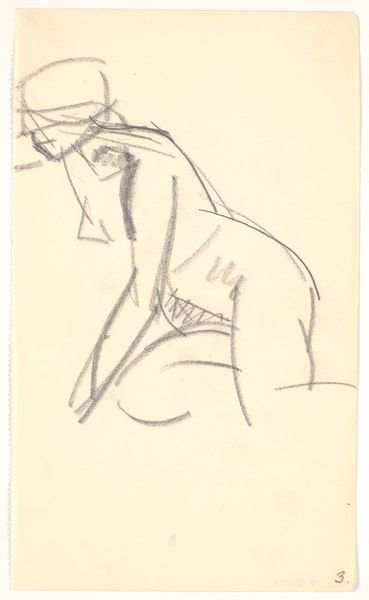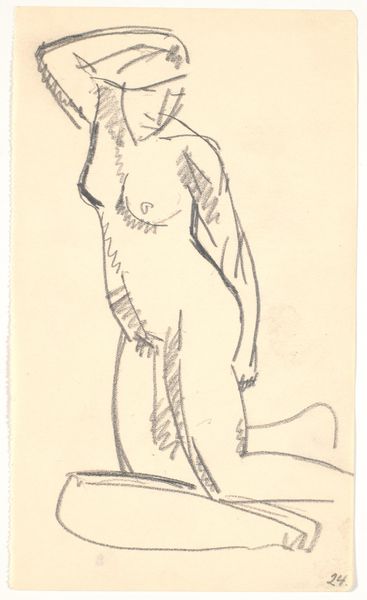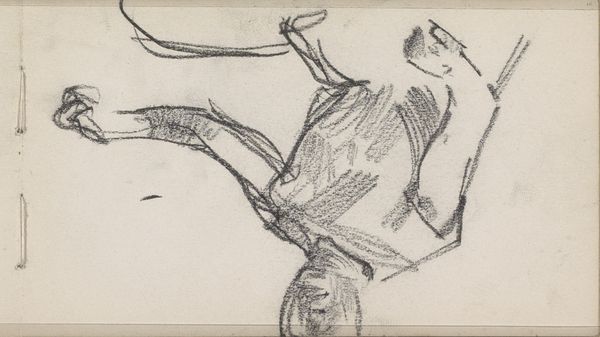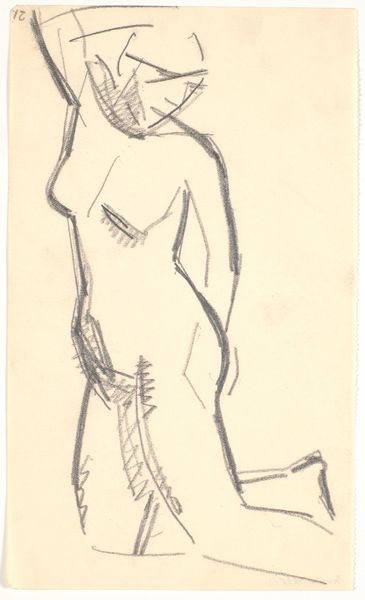
drawing, graphite
#
drawing
#
figuration
#
graphite
Dimensions: 209 mm (height) x 124 mm (width) (bladmaal)
Curator: This drawing from 1914-1915 is called "Knaelende model" or "Kneeling Model" by Karl Isakson. It is created using graphite on paper, currently displayed at the SMK. The rendering shows a figure on their hands and knees. What is your initial take? Editor: A vulnerability, wouldn't you say? The stark simplicity emphasizes the figure's exposed and humble position, making me question what this kneeling is in relation to—power, submission, resilience perhaps. Curator: The kneeling posture has appeared repeatedly across Western art for centuries, especially within religious contexts symbolizing contrition or reverence, such as adoring angels. However, what does the reduction to almost childlike bareness suggest? It reminds me of modernist primitivism and its emphasis on universal experience beyond social conditioning. Editor: True, but isn't there also a reading against dominant modes of viewing? This woman’s form isn't idealized or posed to invite the viewer’s pleasure. It confronts expectations of how a nude body "should" look, refusing any narrative to objectify her as desirable for someone. What if we focus on the quiet strength implied, as she holds her position rather than her expression. Curator: Well, that invites the question of gaze, certainly! The stark, near-brutalist linework perhaps reflects the influence of early 20th century Expressionism, a common influence that evokes inner emotional realities. Isakson uses only contour lines and hatching to define the body, making it raw and direct as though extracted from an emotional state rather than copied from an observation. Editor: Perhaps both? The sparseness removes artifice. In these bare lines there is something radically honest because we engage on more emotional terms given the visible lack of decorativeness, similar to the ethos in much activist art... Curator: Thank you. By emphasizing form through omission, Isakson leaves an indelible visual testament about emotional sincerity; how art can unearth universal sentiments via minimal symbolist clues. Editor: It underlines how something stark, minimal even, can still evoke a depth of feeling and encourage introspection through representation choices regarding who gets represented, and how. A figure so stripped bares the truth of her time.
Comments
No comments
Be the first to comment and join the conversation on the ultimate creative platform.
